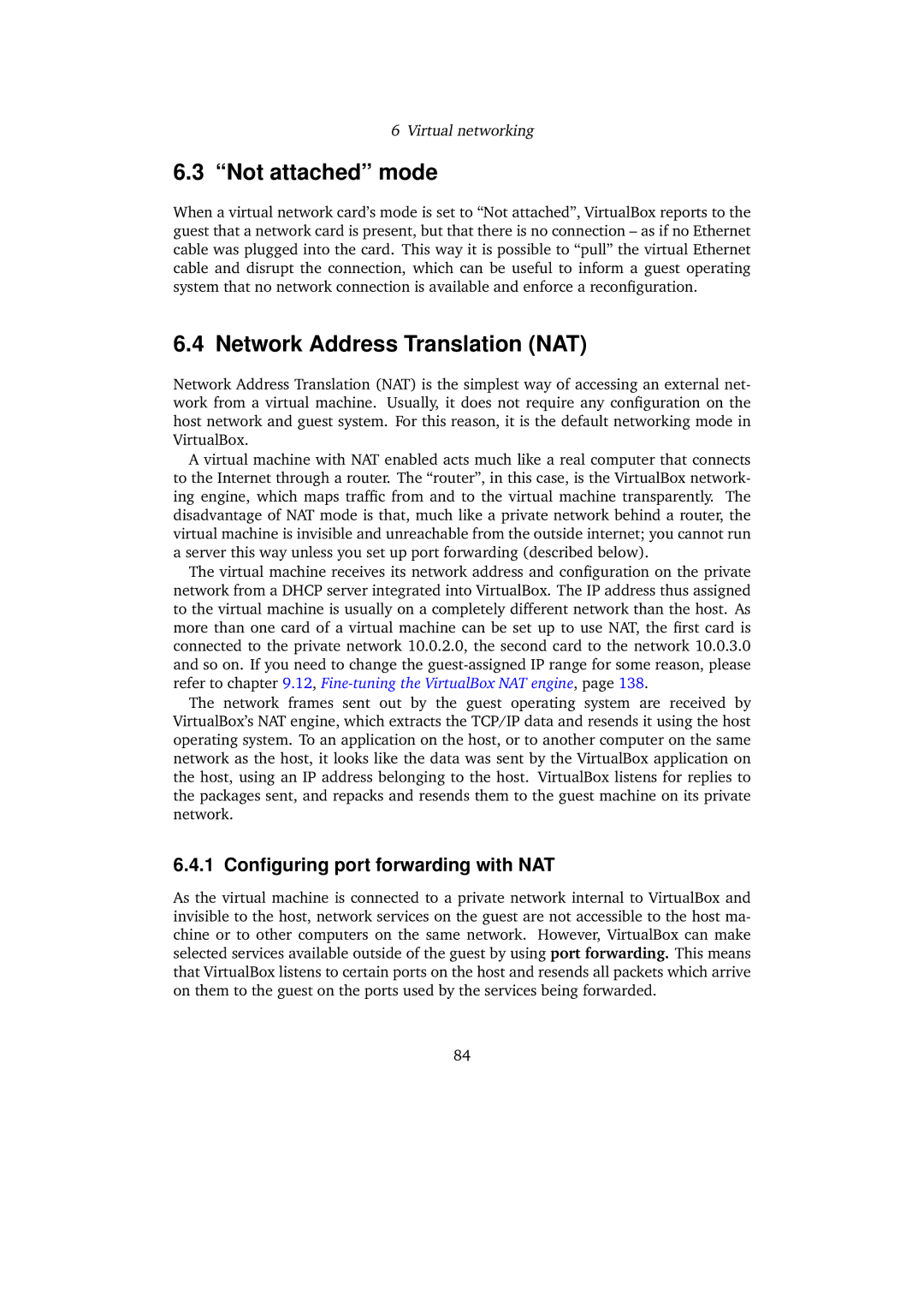6Virtual networking
6.3“Not attached” mode
When a virtual network card’s mode is set to “Not attached”, VirtualBox reports to the guest that a network card is present, but that there is no connection – as if no Ethernet cable was plugged into the card. This way it is possible to “pull” the virtual Ethernet cable and disrupt the connection, which can be useful to inform a guest operating system that no network connection is available and enforce a reconfiguration.
6.4 Network Address Translation (NAT)
Network Address Translation (NAT) is the simplest way of accessing an external net- work from a virtual machine. Usually, it does not require any configuration on the host network and guest system. For this reason, it is the default networking mode in VirtualBox.
A virtual machine with NAT enabled acts much like a real computer that connects to the Internet through a router. The “router”, in this case, is the VirtualBox network- ing engine, which maps traffic from and to the virtual machine transparently. The disadvantage of NAT mode is that, much like a private network behind a router, the virtual machine is invisible and unreachable from the outside internet; you cannot run a server this way unless you set up port forwarding (described below).
The virtual machine receives its network address and configuration on the private network from a DHCP server integrated into VirtualBox. The IP address thus assigned to the virtual machine is usually on a completely different network than the host. As more than one card of a virtual machine can be set up to use NAT, the first card is connected to the private network 10.0.2.0, the second card to the network 10.0.3.0 and so on. If you need to change the
The network frames sent out by the guest operating system are received by VirtualBox’s NAT engine, which extracts the TCP/IP data and resends it using the host operating system. To an application on the host, or to another computer on the same network as the host, it looks like the data was sent by the VirtualBox application on the host, using an IP address belonging to the host. VirtualBox listens for replies to the packages sent, and repacks and resends them to the guest machine on its private network.
6.4.1 Configuring port forwarding with NAT
As the virtual machine is connected to a private network internal to VirtualBox and invisible to the host, network services on the guest are not accessible to the host ma- chine or to other computers on the same network. However, VirtualBox can make selected services available outside of the guest by using port forwarding. This means that VirtualBox listens to certain ports on the host and resends all packets which arrive on them to the guest on the ports used by the services being forwarded.
84
